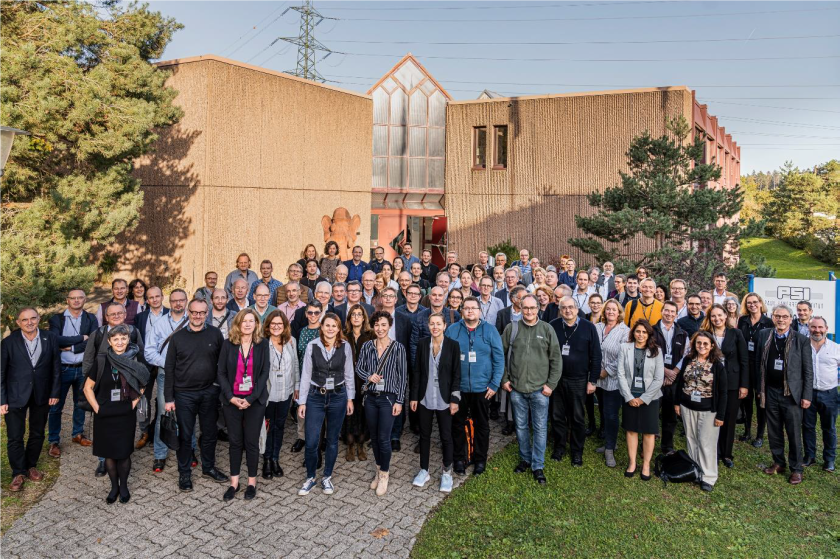LEAPS research infrastructures to tackle societal crises

More than 180 scientists, research facilities directors, policymakers and industry representatives travelled to Paul Scherrer Institute from across Europe to attend the LEAPS Plenary Meeting. © Markus Fischer/PSI
Against a backdrop of the energy crisis, scientists and policymakers convened at Paul Scherrer Institute PSI in Switzerland and set out a vision for European accelerator based photon sources to address current and future societal challenges together.
“LEAPS facilities find themselves in a unique position of simultaneously needing to adapt as heavy energy users whilst being an integral part of the solution.” So said Leonid Rivkin from the Paul Scherrer Institute PSI, Switzerland, Chair of the League of European Accelerator-based Photon Sources (LEAPS). Speaking at the 5th LEAPS plenary meeting, Rivkin commented that planned facility upgrades to leading European research infrastructures will help favourably shift the balance, providing more X-rays for more science with less energy consumption.
The current energy crisis was an important theme during the 5th LEAPS plenary meeting, held at the Paul Scherrer Institute from the 26th – 28th October 2022. The meeting welcomed more than 180 scientists, policy makers and industry representatives from across Europe. This included directors of the 19 member European accelerator-based photon facilities – i.e. synchrotron light sources and free electron lasers (FELs) - as well as high-level representatives of the European Commission.
read more >
PSI
https://www.helmholtz-berlin.de/pubbin/news_seite?nid=24187;sprache=en
- Copy link
-
The twisted nanotubes that tell a story
In collaboration with scientists in Germany, EPFL researchers have demonstrated that the spiral geometry of tiny, twisted magnetic tubes can be leveraged to transmit data based on quasiparticles called magnons, rather than electrons.
-
Ernst Eckhard Koch Prize and Innovation Award on Synchrotron Radiation 2025
At the 27th BESSY@HZB User Meeting, the Friends of HZB honoured the dissertation of Dr Enggar Pramanto Wibowo (Friedrich-Alexander University Erlangen-Nuremberg). The Innovation Award on Synchrotron Radiation 2025 went to Prof. Tim Salditt (Georg-August-University Göttingen) and Professors Danny D. Jonigk and Maximilian Ackermann (both, University Hospital of RWTH Aachen University).
-
Bright prospects for tin perovskite solar cells
Perovskite solar cells are widely regarded as the next generation photovoltaic technology. However, they are not yet stable enough in the long term for widespread commercial use. One reason for this is migrating ions, which cause degradation of the semiconducting material over time. A team from HZB and the University of Potsdam has now investigated the ion density in four different, widely used perovskite compounds and discovered significant differences. Tin perovskite semiconductors produced with an alternative solvent had a particular low ion density — only one tenth that of lead perovskite semiconductors. This suggests that tin-based perovskites could be used to make solar cells that are not only really environmentally friendly but also very stable.
